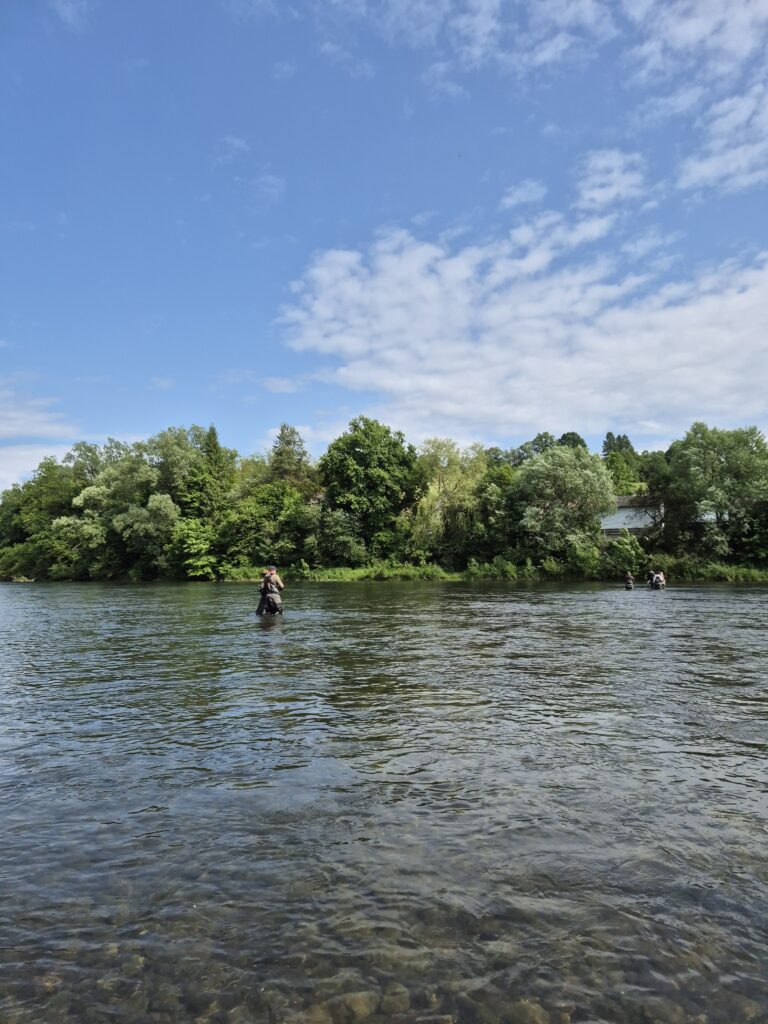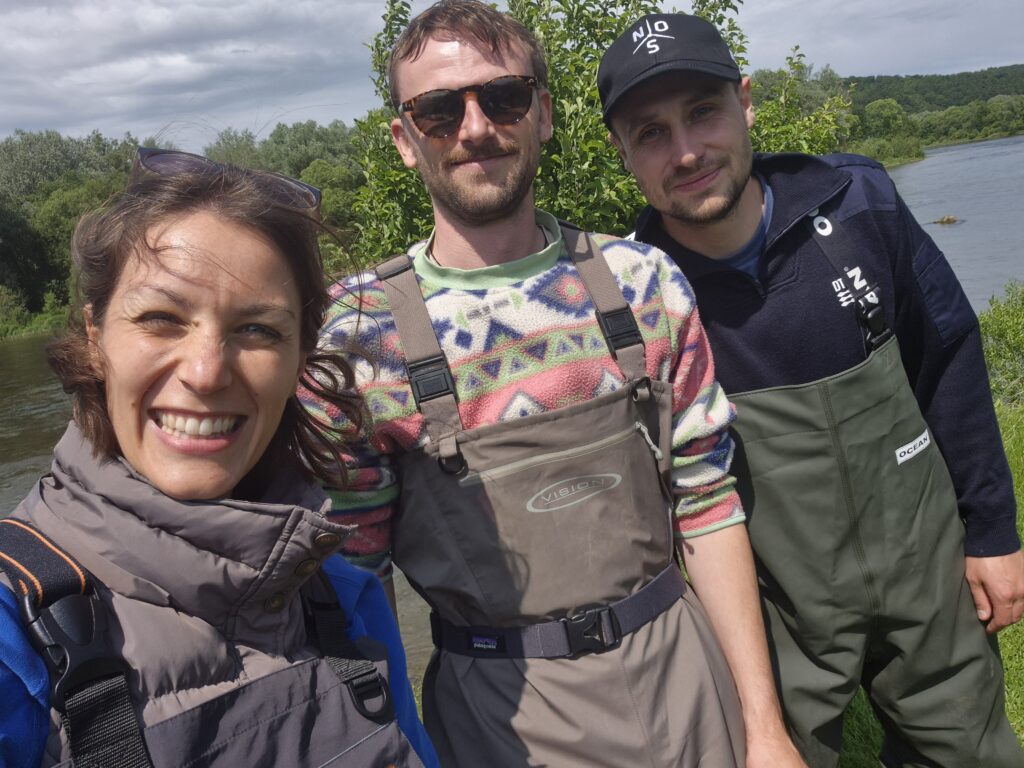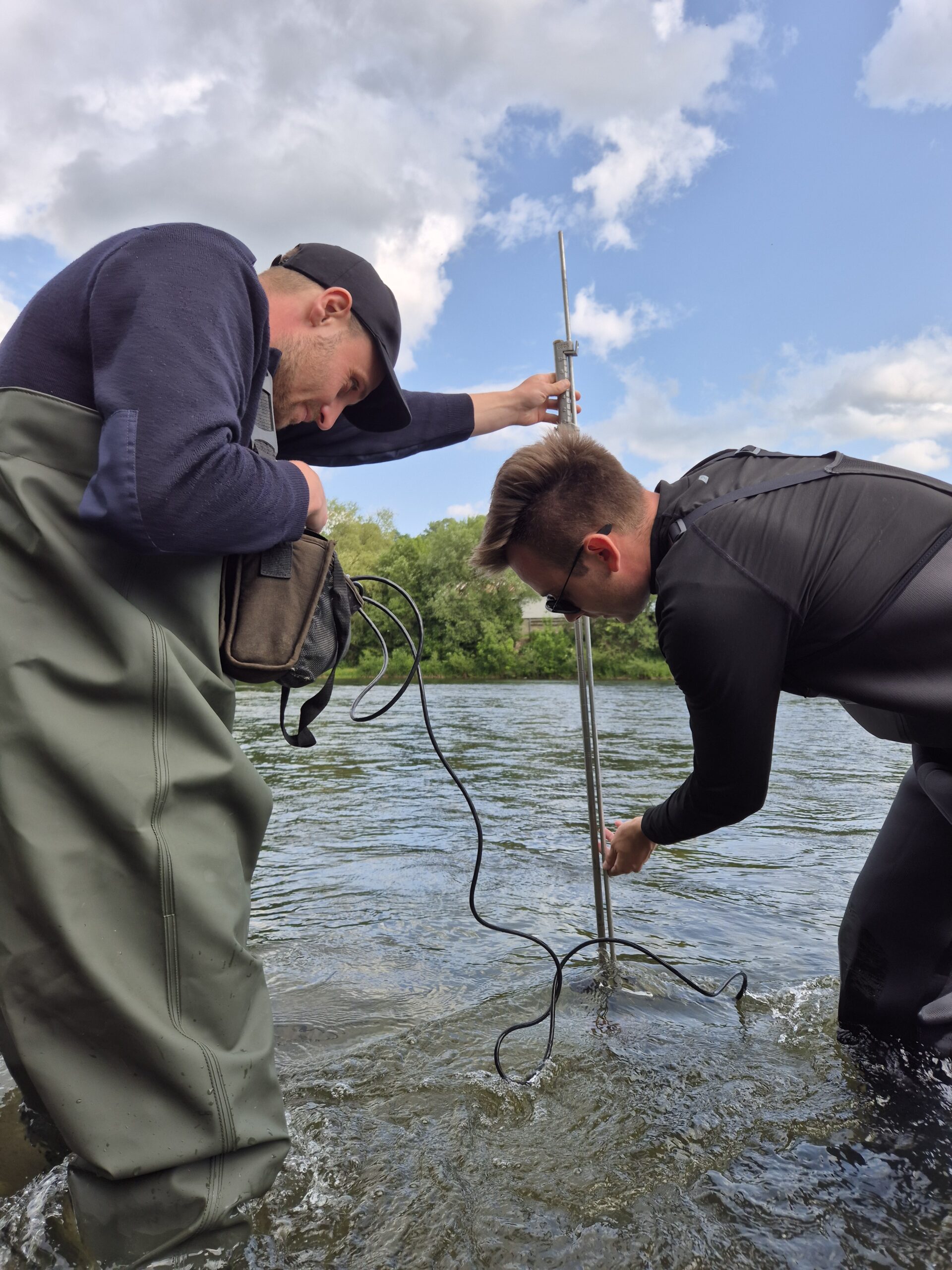Partners from the ProtectFish project gather in Poland to develop a predictive model for grayling habitat conservation.
A lot of good science starts on the ground. In the San River, located in southeastern Poland, several partners from the Protect Fish project have come together in June 2025. This to conduct water velocity measurements—an essential step in understanding the river’s dynamics and its impact on local fish populations.
Even a seemingly simple task like measuring how fast water flows can lay the groundwork for advanced scientific models. In this case, these measurements will contribute to the development of an ecosystem model specifically focused on grayling. A species of particular ecological and recreational importance in the region.
The San River, long known as a prime location for grayling and a favorite destination for anglers across Europe, has witnessed a worrying decline in grayling numbers in recent years. One suspected contributor to this trend is increasing predation by cormorants. A topic that the project partners are keen to investigate.

The purpose of this workshop was to train the partners of the project in data collection for MesoHABSIM model to be developed for the case study sites. This model will assess the habitat availability for fish and compare it with the hunting habitat for Cormorant. This aims to identify river features, which offer protection to fish.
The partners learned to:
- Identify habitat features,
- Measure hydraulic patterns, and
- Enter the data into a new software platform for habitat suitability calculation.
The sampling strategy for each case study has been discussed and prepared.
By studying the San River, the Protect Fish team aims to better understand which habitats are ideal for grayling and, conversely, which may be avoided or impacted by predators. A key objective of the project is to identify areas within the river that can serve as refuges for grayling—such as shaded zones under overhanging trees—that may also be inaccessible to cormorants.
This fieldwork is the starting point for a broader effort: to define the essential features of a predictive grayling ecosystem model. Such a model could not only guide conservation efforts in the San River. But also inform similar actions in other European river systems where grayling populations are under pressure.
As the team continues its work, the coming year is dedicated to exploring these ecological dynamics and refining the model. This with the ultimate goal of ensuring a sustainable future for grayling and the river habitats they depend on.

More on our work is to be found via this link.
More on the Polish ProtectFish partner (NIFRI) via this link

